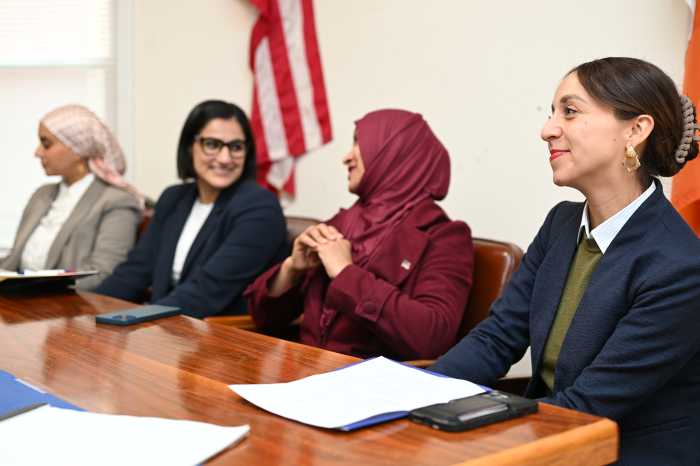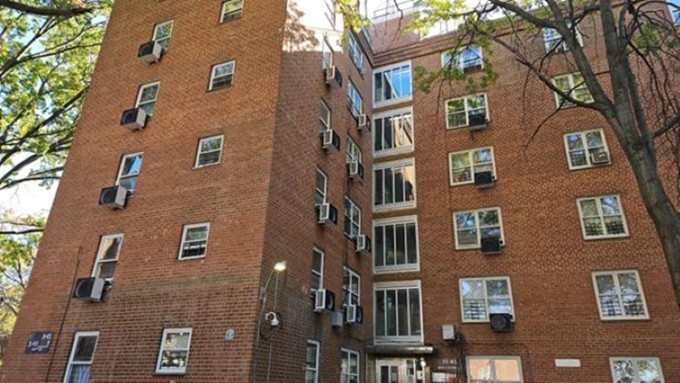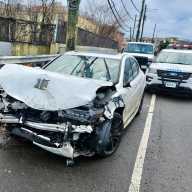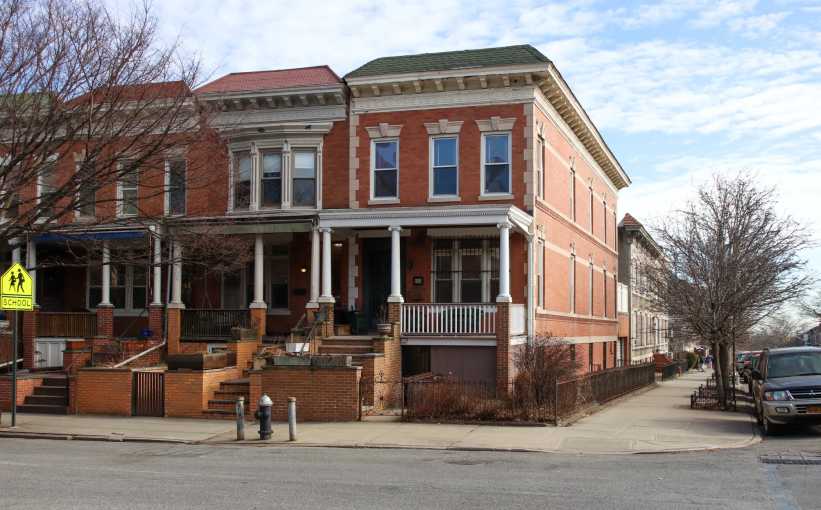Jaywalkers Blasted At Maspeth ‘Vision’ Meet
Queens residents voiced their neighborhoods’ specific traffic safety needs to the Department of Transportation (DOT) at a town hall meeting on the Vision Zero traffic safety initiative last Monday, June 30, at I.S. 73 in Maspeth.

For over two hours, DOT Queens Borough Commissioner Dalila Hall fielded most of the questions and concerns from attendees, taking careful notes so her office can rectify any neighborhood traffic ailments.
Most of the issues brought up by attendees included adding stop signs to intersections, requesting evaluations of certain crossings, lowering speed limits, adding traffic lights, and changing street directions.
City Council Member Elizabeth Crowley, who organized the meeting, claimed that 4,000 crashes happen every year, many of which caused injuries or fatalities. She said a crash is an accident, and feels all of them could be prevented.
Through a joint partnership with the DOT, Taxi and Limousine Commission, and NYPD, the Vision Zero effort led by Mayor Bill de Blasio aims to dramatically decrease the amount of crashes.
Capt. Christopher Manson, the 104th Precinct’s commanding officer, stated he has numbers that prove the program is working. He explained that the precicnt has targeted specific areas that have the most problems to send in enforcement and issue appropriate summonses.
Manson said that while this year has seen 35 more accidents, injuries are down from 378 to 256, or 32 percent. 26 fewer pedestrians have been struck and he’s seen a 31 percent decrease in vehicle injuries.
The Vision Zero process for the NYPD is to educate residents on traffic and pedestrian laws and safety issues by distributing literature and talking to people face to face. The next step is enforcement.
This year alone, Manson noted, the 104th Precinct has issued almost 600 hazardous summonses, or accidents that could directly cause injuries such as failure to yield to pedestrians (127 summons this year, or a 106 percent increase), failure to stop at stop signs (530 summons, or a 67 percent increase), and speeding (258 summons, or a 227 percent increase).
Drivers using cell phones have also been targeted significantly with 540 summons being issued for talking or texting while driving.
While the panel was positive about the mayor’s Vision Zero program and the work that has been done, some residents felt their voices have not been heard.
Carol Terrano, a Woodside resident and Community Board 2 member, demanded a stop light on 50th Avenue to slow drivers who speed down the road off of Laurel Hill Boulevard in order to avoid a light at 61st Street.
She was frustrated with the lack of action and said, “[DOT] is a useless agency … they’ve done nothing for us,” gaining applause from the crowd. Terrano feared that sometimes the only way anything gets done is after someone dies or a cop gets hit.
She is optimistic that the new pressure on the DOT from the mayor’s administration will finally bring about changes.
Glendale resident Tom Murawski believes that pedestrians are not taking enough heat.
He said he nearly hits someone almost everyday, especially young people on their cell phones and crossing against the light.
Murawski’s wife, Cathy, had four youths “saunter” in front of her car when she had a green light. She reportedly asked them, “Do you want me to hit you?” and they allegedly replied, “Sure, go ahead and hit me.”
While she feels the DOT is doing a good job addressing residents’ complaints, Cathy Murawski wished for more action against pedestrians who break the law.
When asked about what was being done to educate young people, Hall said there were several programs out to inform youth about proper pedestrian laws and even educational courses that utilize classroom study and real world application.
Bill Kregler, a Community Education Council District 24 member, also wants to see more action against pedestrians, but is not so excited about the program.
“[I’m] not against it, its noble, but it’s not realistic,” said Kregler, who thinks the plan is a “money maker, rather than a deterrent.”
He also questioned the city’s 200 traffic cameras which, according to Kregler, come with no warning signs, to drivers.
In an interview after the meeting, Crowley stayed positive and agreed that the neighborhood specific needs voiced at the meeting would add to the citywide goal to end traffic deaths and injuries.
Crowley said the DOT is a major player and with NYPD enforcement, “[they] will bring about safer streets.”




































